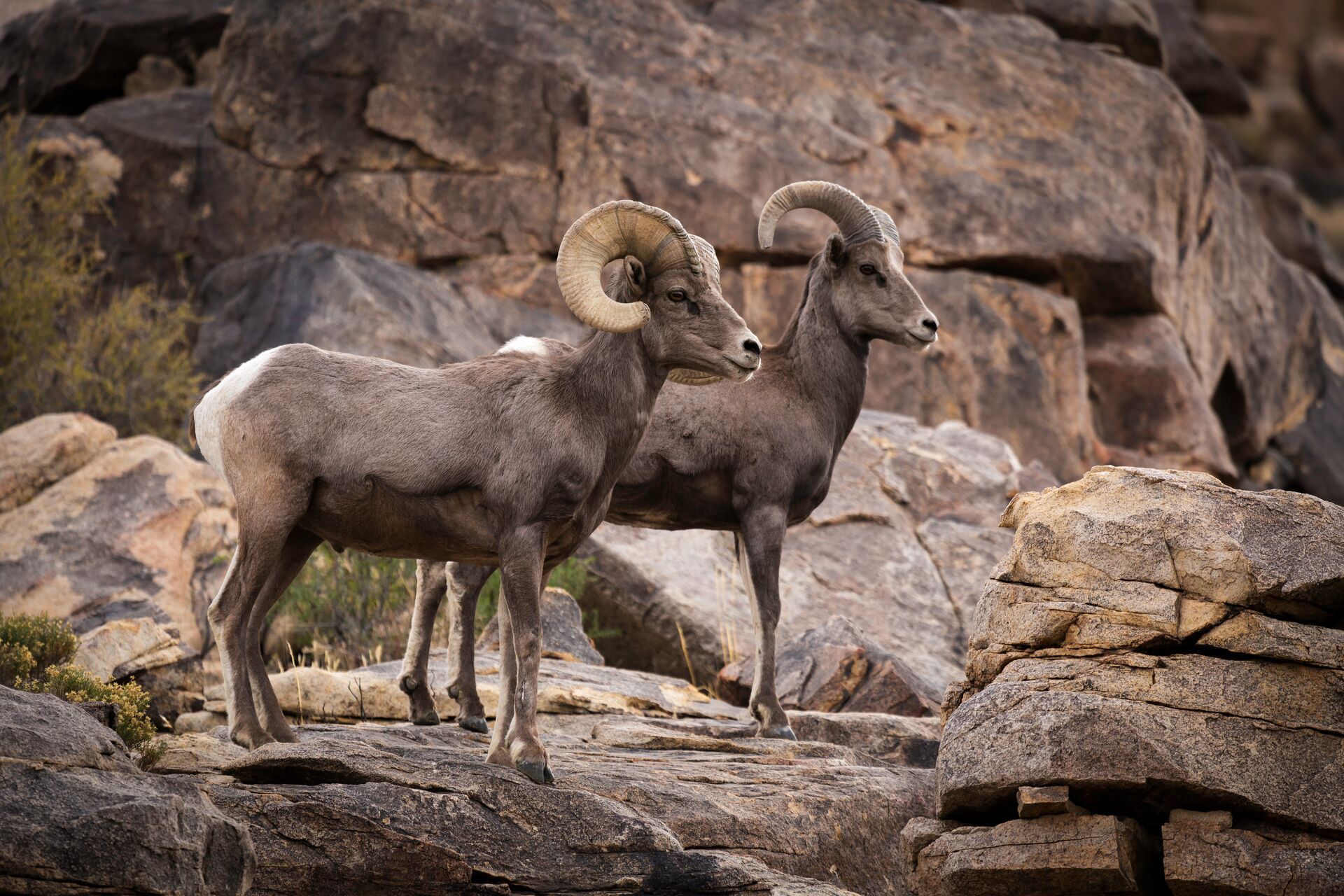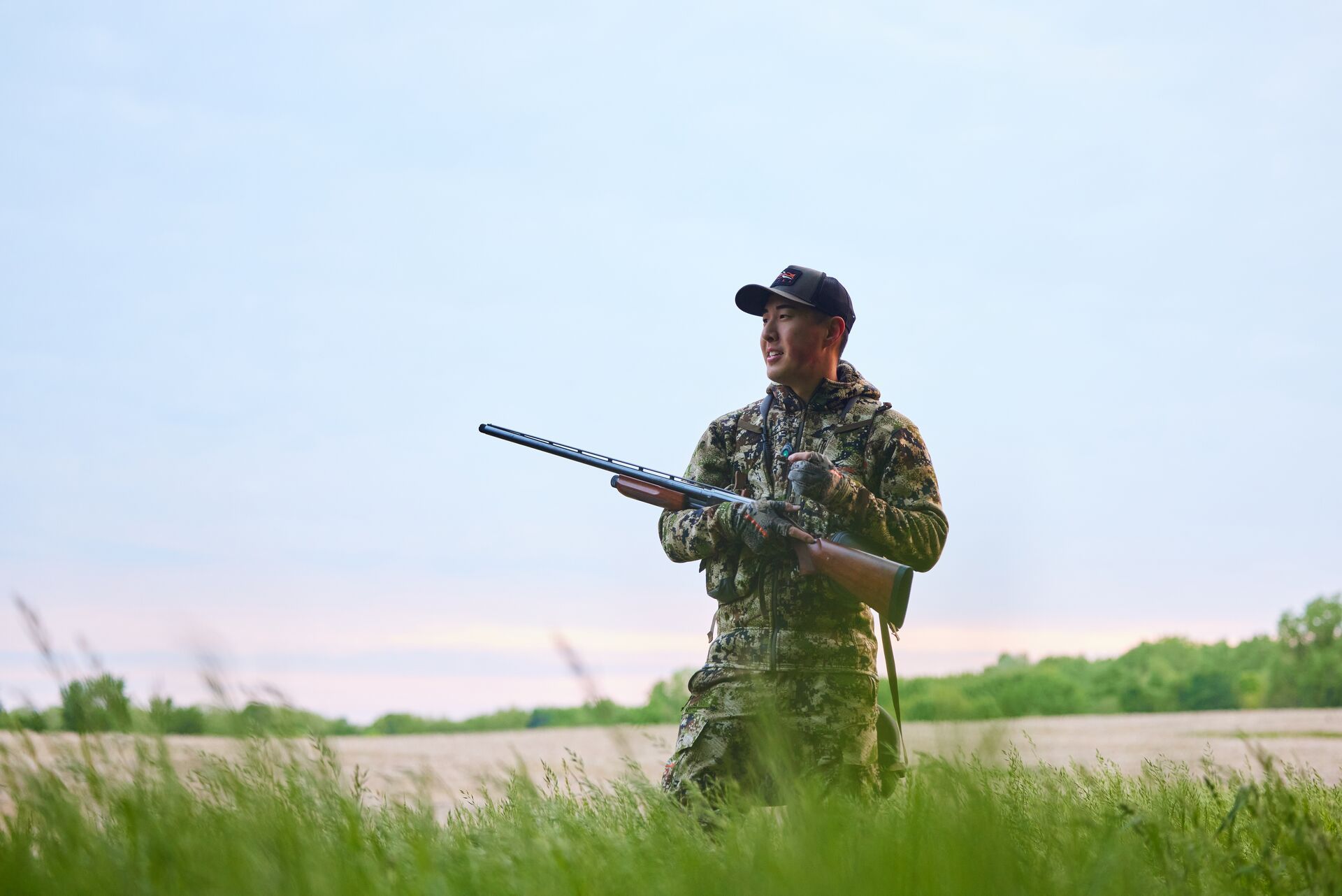However, these trials make harvesting a sheep a gratifying and memorable achievement for hunters, often sparking a lifelong passion and dedication for the sport.
Do you have sheep in your sights this season (or on your bucket list)? You'll want to keep reading.
Today, we talk about three sheep types: the bighorn sheep, the desert bighorn, and the stone. We're diving into everything you need about these elusive and stunning creatures to prepare for your next hunt.
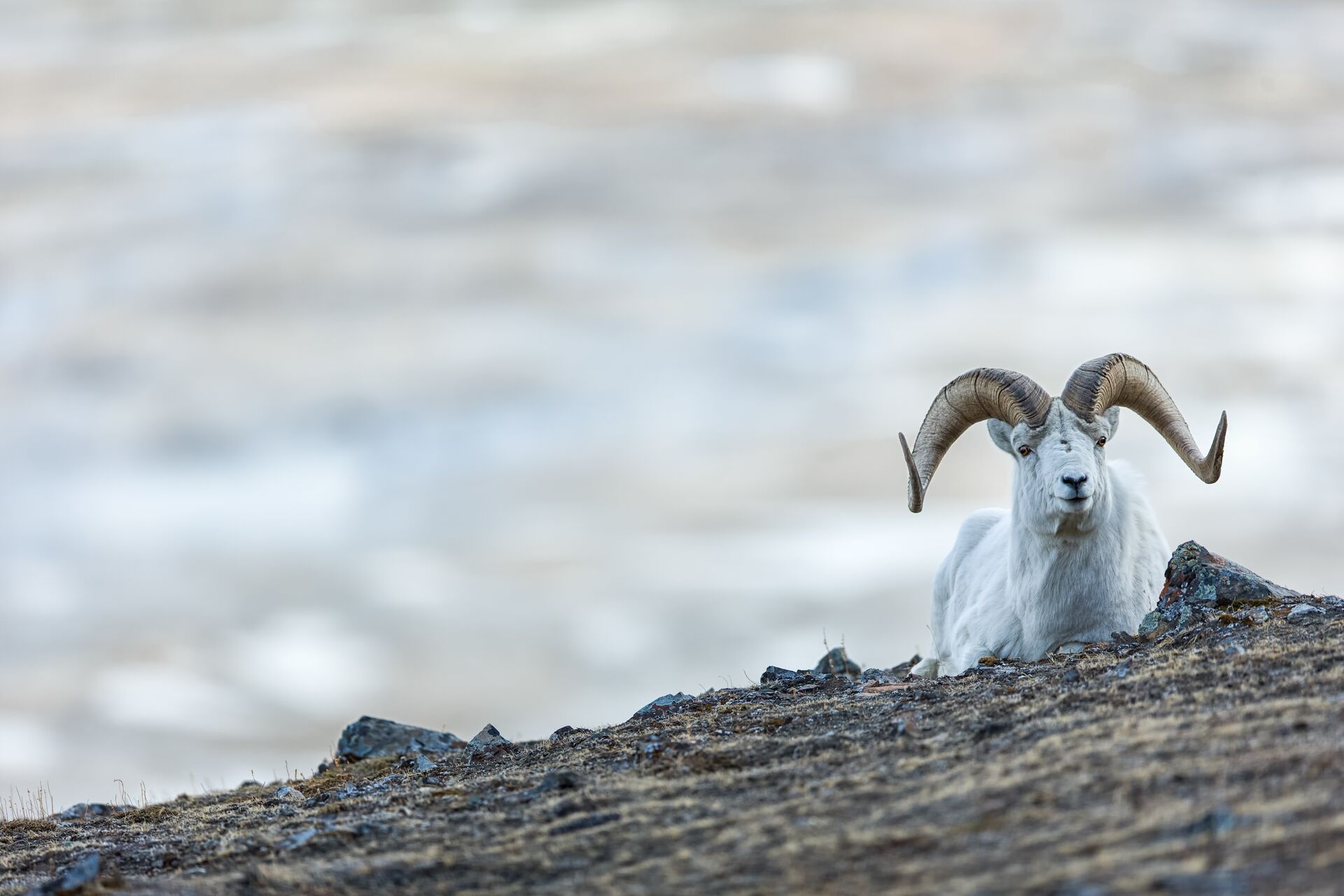
Let's Talk About Sheep
Many folks think "bighorn sheep" encompass all huntworthy sheep. However, there are different types of sheep you can hunt depending on where you're hunting. It's important to know a little about each one before you get out in the field.
Bighorn Sheep
Bighorn sheep are predominantly found in the Sierra Nevada and Rocky Mountains. They prefer open terrain with rocky outcrops that they can leverage to evade predators quickly and effectively.
They're prized for their impressive curved horns (male and female), robust and agile build, and brownish fur with a distinctive white patch. Males can grow to almost five to six feet long and weigh up to 300 pounds, compared to about half that for females, at 156 pounds. Their diet consists mainly of foraged grass, sedges, shrubs, and herbs.
Behaviorally, they form matrilineal social groups with a dominant structure ordered amongst the ewes. Their central group tends to be based around familiar relations and lambs, and these structures will often form based on a shared sense of 'home range' or site association to develop familiarity regarding food access and cover from predators.
Rams are more likely to wander and may have several groups of ewes that they associate with. Horn size is a symbol of dominance and rank within these hierarchies.
Desert Bighorn Sheep
The desert bighorn is a subspecies of the bighorn sheep, which shares some similarities with the species above. It's slightly smaller than the bighorn and has a lighter coloration, reflecting the environments in which it inhabits.
Unsurprisingly, the desert bighorn is highly adapted to arid environments such as the Mojave and other zones in the Southwest. It can handle the heat and cool that the desert environment brings and can often be found chilling out in shaded areas, preserving energy.
Its adapted digestive system allows it to access nutrients from tough desert plants such as mesquite, meaning it can minimize its time out in open locations, using its cloven hooves to climb steep ranges and reach impressive elevations.
You may be surprised to discover just how isolated desert bighorn sheep can be. They thrive in harsh desert climates and can go for impressive periods without drinking water.
Like bighorns, they prefer centralizing their social groups in a singular location to establish a home range movement pattern. A highly developed sense of vision, posture, and scent all play into communication more so than vocalizations, which are relatively rare.
Horn and overall body size determine a sheep's access to resources and mating opportunities.
Stone Sheep
Stone sheep prefer alpine and subalpine environments, primarily found in Northern British Columbia and Yukon.
They're darker in a slate-grayish brown with a white rump patch similar to the bighorn. Their unique appearance and somewhat less studied behavioral patterns make them both an elusive and highly prized trophy.
These sheep eat a variety of plants, such as grasses, sedges, and even shrubs, such as willow, at different times of the year. They also access minerals to supplement their diet from mineral licks.
Females form flocks with other ewes, immature rams, lambs, and yearlings, whereas males are more likely to roam, accessing up to six different home ranges throughout the yearly cycle.
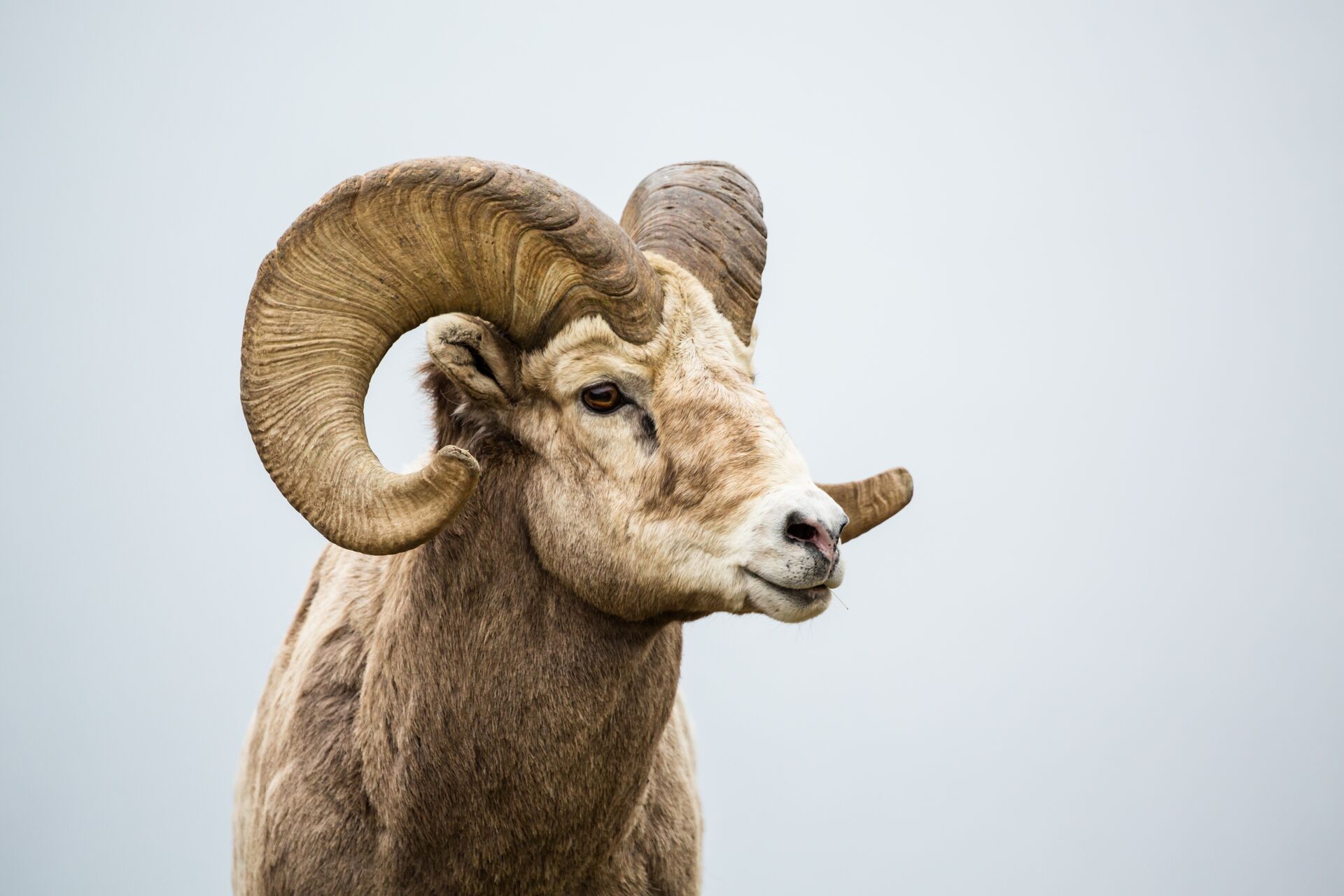
Hunting Challenges to Overcome (Before You Can Count Your Sheep)
Sheep hunting is a highly specialized form of hunting that requires intense preparation, physical training, and near-expert knowledge of the species. Let's explore these a bit further below.
Physical Training
Whereas deer hunters may be more used to a forested environment or even a private land hunt, sheep inhabit rugged and sometimes treacherous terrain, including slopes, rocky terrain, and high elevations.
To prepare for your hunt, any exercise that involves hiking or backpacking in similar environments will be a great start. If you can't access any mountainous regions where you live, stairs will be your friend (think stadiums, step-up activities in the gym, and large office buildings).
Sheep hunting is a marathon, not a sprint, so focus on mentally and physically building up endurance and getting comfortable operating with high fatigue levels.
Patience and Strategy
Often, sheep hunts last several weeks, requiring you to pack out into high, isolated zones where these animals hide.
Once you've located the animal, harvesting one becomes a different game altogether. With their sharp eyesight and highly adapted hooves, these animals don't grow those impressive horns by being careless.
It's crucial to remember to move slowly, engage in lots of glassing, and use the terrain to stay low and out of eyeline. A slow and careful approach is essential in this process.
Shot Placement
You've waited years for the tag, prepped your gear, got into peak physical condition, and are now looking at a prized sheep in your sights. Do you have the right shot to bring it home?
The best way to guarantee a successful shot is to practice field positioning. This means getting comfortable firing from different angles, on an incline, and firing downward-angled shots. However, it's crucial to always stay within your shooting range.
Equally important is to study the anatomy of the animal to ensure an ethical kill, which will most likely be in the middle or behind the front right leg.
Getting a Tag
Even getting a sheep tag can be an act of perseverance and resilience.
Tags for hunting Bighorn, Desert Bighorn, and Stone Sheep are often limited and allocated through a lottery system due to their conservation status in states including Arizona, California, Nevada, New Mexico, North Dakota, Utah, Texas, Wyoming (just to name a few).
Here, the basic principles of supply and demand come into play as demand far exceeds supply, meaning the chances of a first-time applicant can be less than 1%.
At the end of the day, these wild sheep species are native to America, and the relevant state wildlife authorities have a duty to protect and maintain these populations through funding from tag fees and similar programs. So, while it can be frustrating and require much waiting and patience to win a tag, the process helps make sure sheep are available to hunt when you finally get one.
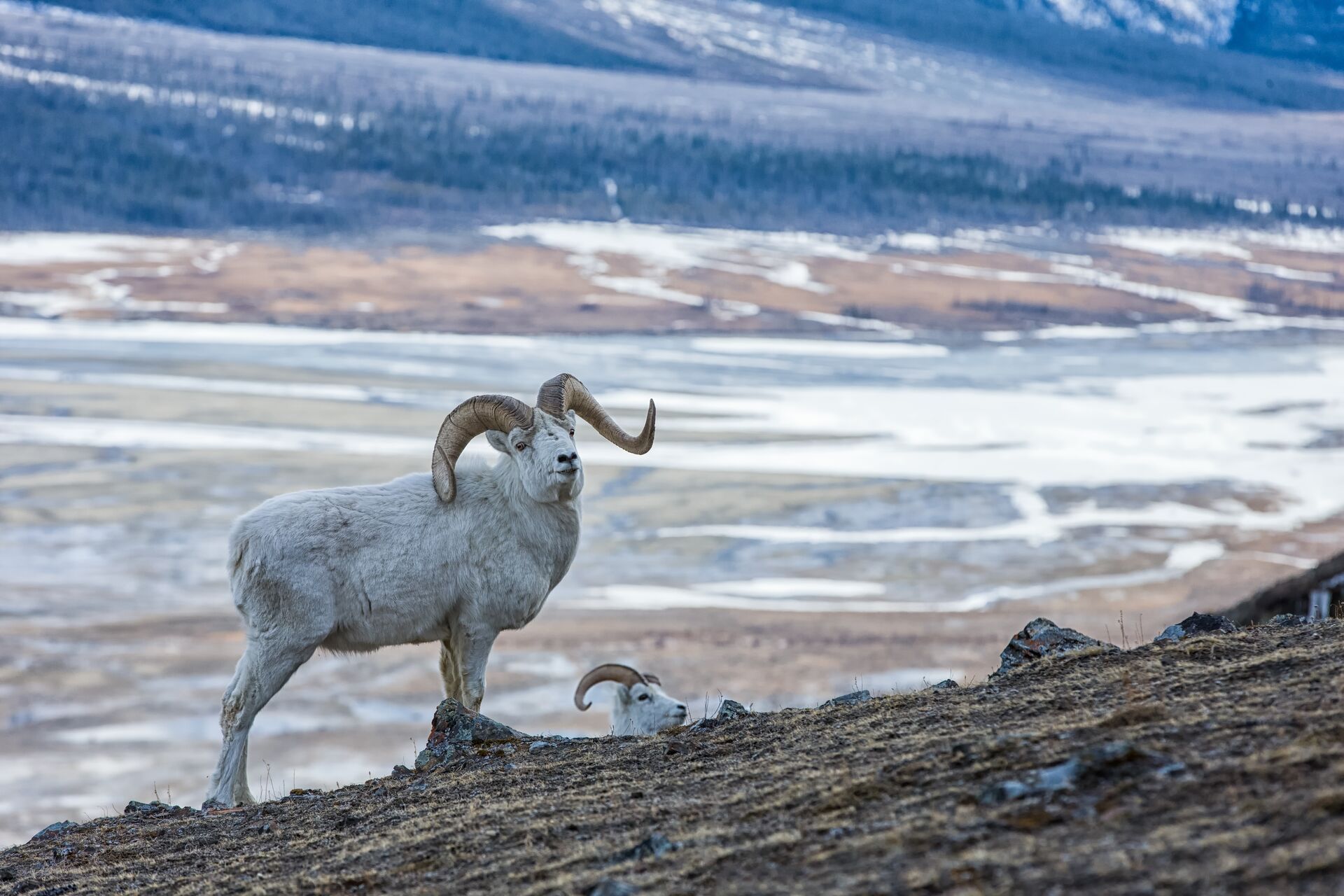
Tips For a Successful Sheep Hunt
In addition to the preparation tips above, you'll need to prepare for your sheep-hunting trip. This type of adventure is not quite the same as grabbing what you have on hand for a quick afternoon or weekend in the deer blind.
Get Your Gear In Check
Yes, you're going to be walking a lot, so durable, waterproof boots and layered clothing to handle variable weather conditions are a must-have to stay comfortable and deliver an optimal hunting performance.
You'll also be doing a lot of glassing, so investing in quality optics, such as high-quality binoculars and spotting scopes, is an essential piece of gear.
Sheep are heavy, durable creatures. Ammunition that is solid at greater than average distances that will ensure a clean, ethical kill will be the obvious choice. Something like a .270 Winchester or .30-06 will be a safe bet.
Start Scouting
As you wait for your tag, you can get busy planning your hunt.
E-scouting the terrain and targeting areas like watering holes can greatly increase your chance of success (just don't think of the inclination too much). Even if you plan on taking a guided hunt, which can be a great option, especially for first-time sheep hunters, studying the landscape and sheep movement patterns can still be worthwhile.
Use HuntWise to get a sneak peek of the land you'll hunt and start marking potential areas to talk over with your guide.
Build Your Mental Toughness
Sheep hunting is like the "Everest" of hunting pursuits. I've found that competency and preparation are the ultimate ways to build resilience for a hunt.
It's that extra gym session when you don't feel like going, the hours at the range speaking to other hunters and learning as much as possible, and an appreciation for being able to partake in the sport and explore incredible natural environments that can often be rewarding enough.
Finally, sharing the hunt with great people and those you care about can make all the difference in the world. However you mentally prepare, you should come away from the hunt feeling like you've left nothing on the table and given your all.
A successful sheep hunt is a significant achievement in the hunting community, often the result of years of preparation and dedication; however, it's important not to forget to also harvest the highly-prized meat as part of your hard-earned reward.
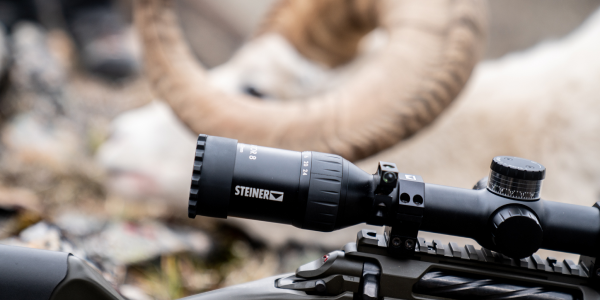
Your Bighorn Sheep Adventure Starts With HuntWise
Bighorn sheep hunting represents everything great about hunting: the opportunity to push oneself further, the culmination of practice, study, and developing resilience out in the field, and the privilege of exploring and connecting with incredible and ancient landscapes.
If you're lucky enough to draw a tag, make sure you're thoroughly prepared for the adventure. That starts with the ultimate hunting app and access to mapping layers, markers, gear discounts, and more.
With HuntWise, you can start preparing before you even get your tag — giving you an advantage over the terrain and other hunters to bring home that prized sheep. We'll even give you a leg up with your first week free after downloading the app! Use it to explore HuntWise Pro or Elite features, including gear discounts, up to 15 days of forecasting, various map layers (including LiDAR), and more.
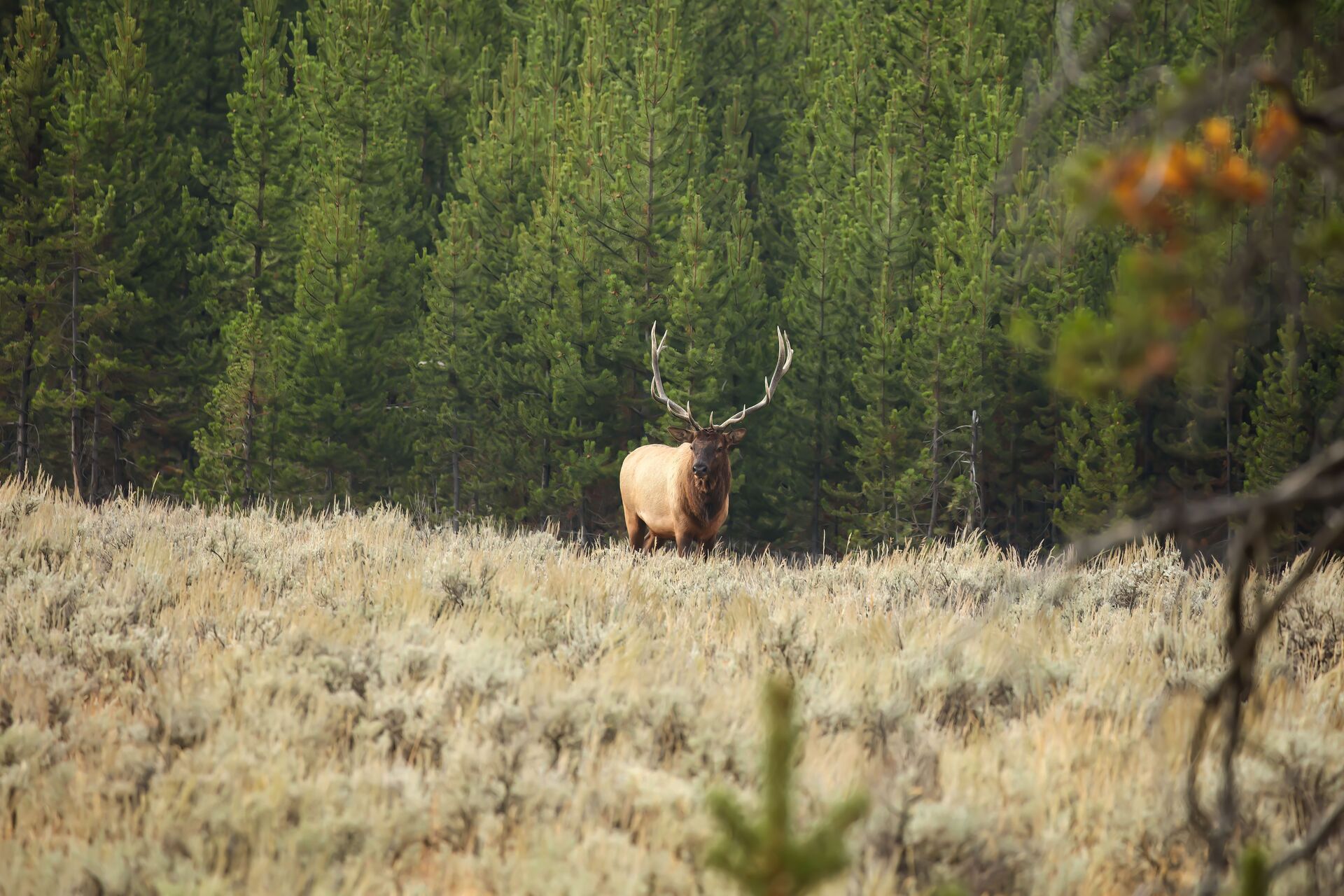
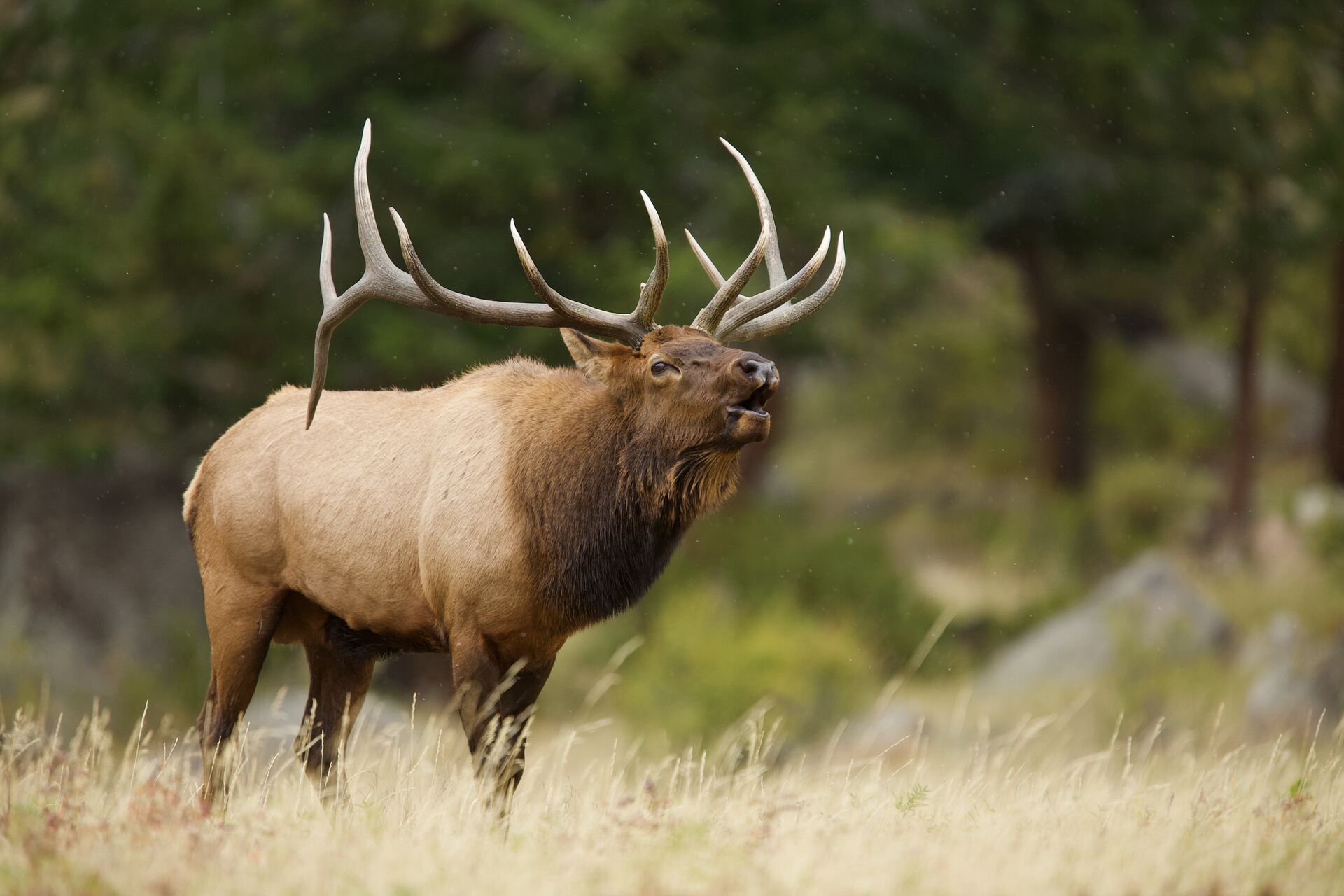
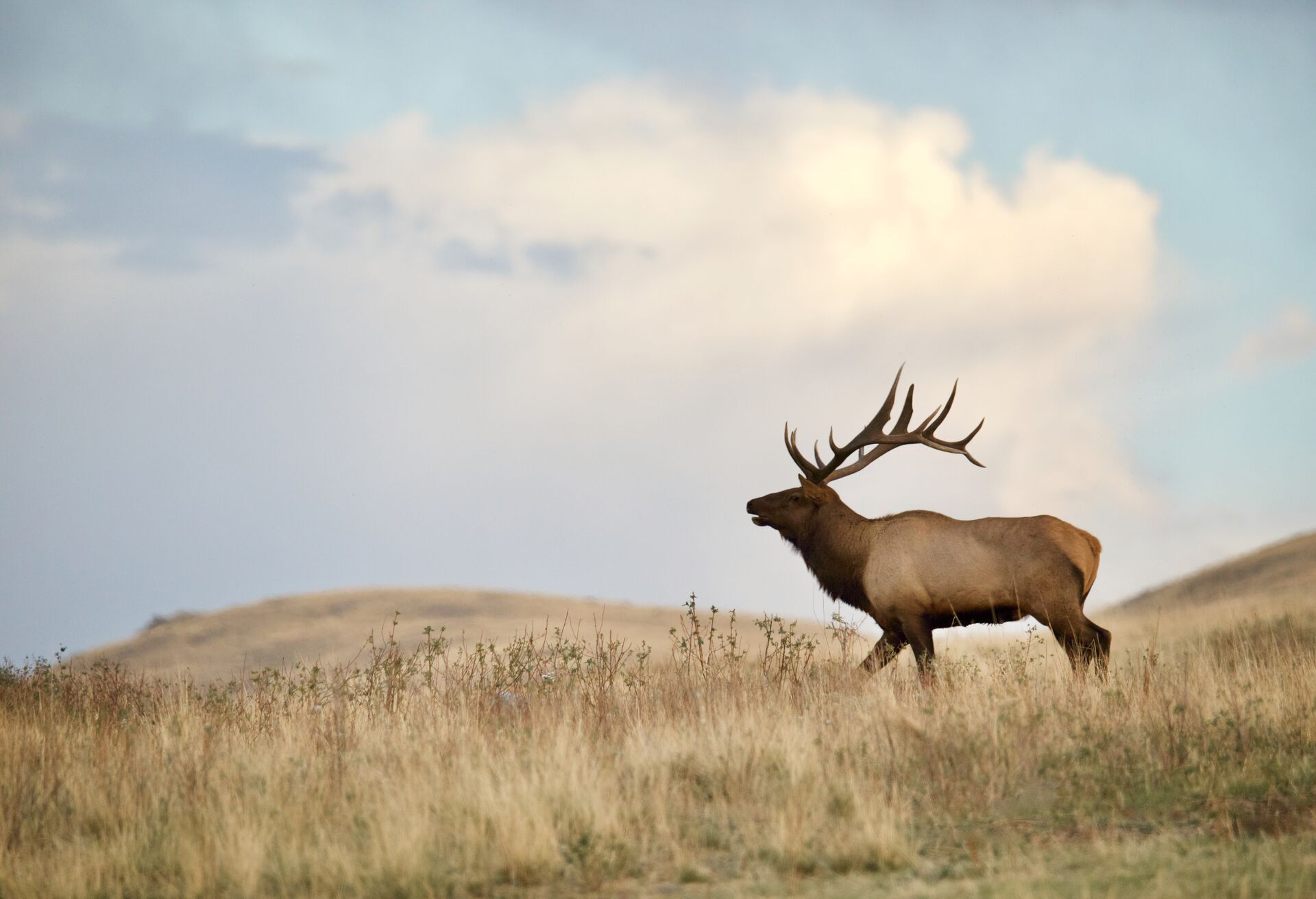
 Big Game
Big Game Big Game
Big Game Big Game
Big Game